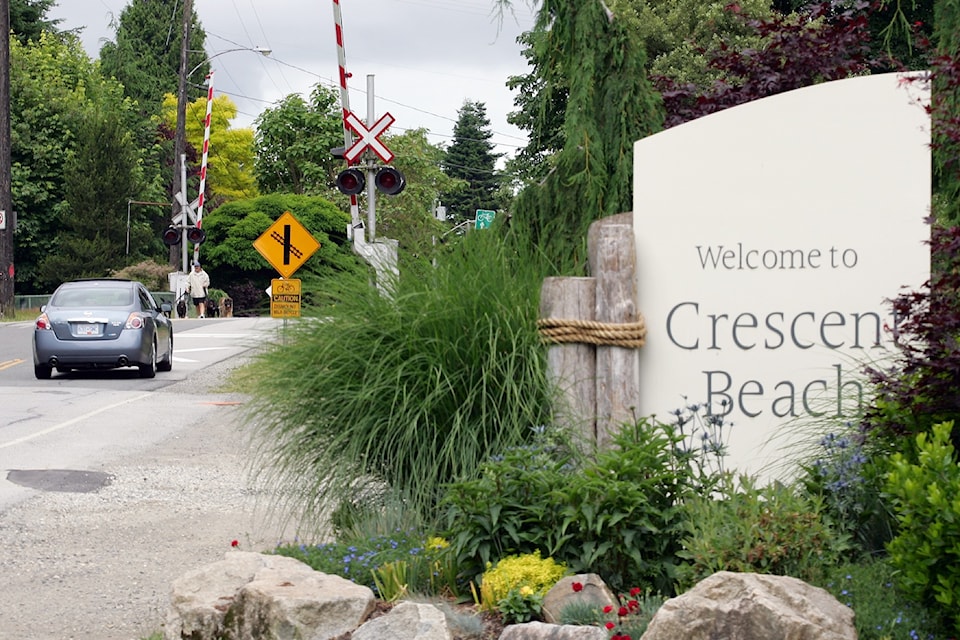SOUTH SURREY — After two recent train stalls that essentially closed all access to Crescent Beach, residents want to see changes made that would lessen the likelihood of future shutdowns.
According to Erik Seiz, president of the Crescent Beach Property Owners’ Association, the first incident took place on June 26 when a train uncoupled after coming around a curve northbound resulting in all access to the area being blocked for some 45 minutes. The second incident, another uncoupling, occurred on Aug. 2 and blocked beach access for 10 minutes as well as access at the McBride Street Crossing for three hours. In the second instance, Seiz said it was fortunate the engine was able to disconnect and move off of beach crossing, but noted the rest of the train was stuck for hours.
And with both incidents taking place in the same area, Seiz would like to see changes made that would make it that much harder for future stalls, or even a derailing, to take place.
The area in question is a curve is north of the Nicomekl Bridge. While trains are to go 10 miles per hour around the Nicomekl area they are allowed to increase their speed shortly afterwards, which Seiz suspects to be the issue.
“Why does a coupling break? Because of stress and why would there be stress? Because of braking,†said Seiz. “So if the coupling is going to break, we’d like to see it in a place where the train doesn’t end up sitting across the crossings.
“So I would like to see that speed boundary extended to the south Crescent Beach track curve. That way trains would be slowing down before they enter the curve and the community so that way if there’s going to be a failure it wouldn’t take place right in the centre of the community.â€
The area hasn’t seen an incident like this since 2007, when a train was also stalled across the tracks. At that time, Seiz said BNSF explained that the likelihood of a “knuckle†failing was low, but with two more incidents in the last five weeks, he’s wondering what can be done now.
“What we are seeing is not at all odd. It's exactly what you'd expect when you push a system beyond what it was designed for,†he said. “The bay corridor is a 100-year-old line, full of curves and trestles that is supporting 125 car freight trains pulled by four engines. It was never built with that in mind, and the statistics are simply proving that.â€
Additionally, Seiz said that with three recorded incidents already happening in the same spot, if anything more serious were to occur in the future it can no longer be passed off as an accident.
“Negligence is the word. The context is, when you don’t know better, it’s an accident. When you know better it’s a crime,†he said. “So it all comes down to now that you know this spot has been identified, now that we’ve seen statistical improbability take place a number of times in the same spot. When something happens here it’s not going to be an accident, it’s going to be an act of negligence and it’s going to be an act of negligence that’s going to hit every level of government and everybody that’s decided to ignore it.â€
Seiz said he’s been in touch with the different levels of government about it and that he’s heard from Transport Canada, who are aware of the issue.
According to Gus Melona of BNSF, both situations required immediate on-site repair and both instances are currently under review.
“Our goal is to minimize delays and public impact,†said Melonas, who added that they contacted the appropriate agencies to notify them of the delays.
